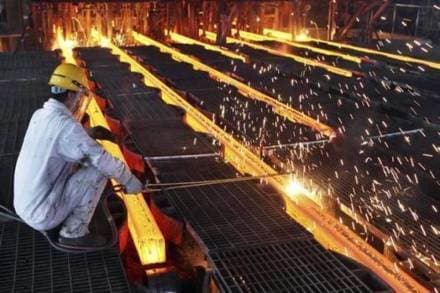The index of industrial production (IIP) grew 29.3% year-on-year in May, driven mainly by a favourable base.
However, the IIP in May was 13.9% lower than the pre-pandemic level (the same month in 2019). It also witnessed a sequential moderation in the wake of the localised lockdowns, suggesting a sustained industrial recovery is still far.
Government officials and analysts cautioned against reading too much into the rates of expansion, given that the pan-India lockdown in April-May 2020 had substantially hampered industrial production. IIP had crashed by 33.4% in May 2020.
The government also revised IIP growth up to 134.6% for April from 126.6% reported earlier — this, too, was inflated by the base effect — and to -3.2% for February from -3.4%.
The index levels for the overall IIP, its three sectors and all the use-based categories in May were lower than the pre-Covid levels of May 2019. Consumer durables and capital goods emerged as the worst-affected sectors in May, trailing the pre-Covid levels by 41.2% and 36.9%, respectively, Icra chief economist Aditi Nayar said.
With the second Covid-19 wave waning and a phased unlocking under way, the sequential momentum has improved over a variety of high-frequency indicators, such as electricity generation, non-oil exports, petrol consumption, diesel consumption, GST e-way bills and vehicle registrations, in June.
“However, the sequential improvement engendered by the states’ phased unlocking over the course of June 2021 is expected to be offset by a normalising base (-16.6% in June 2020; -33.4% in May 2020). Accordingly, we expect a further step-down in the pace of IIP growth to 15-20% in June,” Nayar said.
Sunil Sinha, principal economist at India Ratings, said the output of primary, capital, intermediate, infrastructure, durable and non-durable goods trailed the pre-pandemic levels in the range of 6-41% in May.
“Clearly the second wave is a setback for the industrial output, which had surpassed the pre-Covid level both at the aggregate and at the each of the use-based classification level in March 2021,” Sinha said.
